The state of the race: 2020 US Presidential election
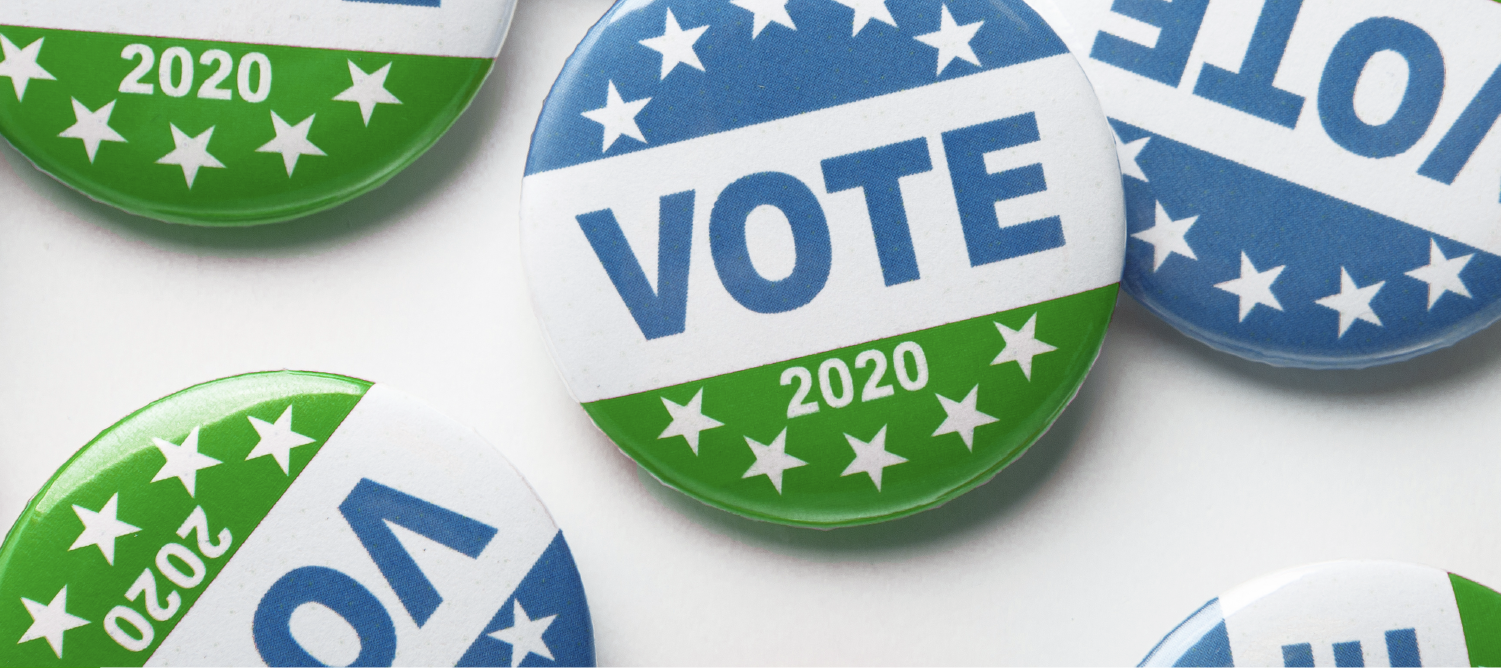
With less than 40 days to go until the US Presidential election, the race is officially in the home stretch. While some are eager for a respite from the ad nauseam coverage of the race, I’m a keen follower of politics and the US Presidential election is my Olympics.
To get a pulse on the state of the race, I analysed tweets mentioning Trump and Biden during and after the recent party conventions. To avoid introducing confusion to the analysis with tweets including both candidates’ names, I limited the scope to examining tweets where only one of the candidates was mentioned.
Using Relative Insight’s language comparison platform, I sliced-and-diced the data in a few different ways:
- Trump vs Biden over the past five weeks
- Trump vs Biden during the respective party conventions
- Biden during convention vs post-convention
- Trump during convention vs post-convention
Here’s what I discovered…
A tale of two conventions: common decency vs law and order
With the pandemic forcing the respective party conventions into the virtual space this year, they were more than ever viewed as carefully curated opportunities for the parties to market their respective candidates. To see how effective Republicans and Democrats were in their efforts, I compared tweets during each of the respective conventions.
After nearly four years of ‘morally troubling leadership’ by Donald Trump, the Biden campaign was keen to use the convention as a platform to showcase the moral decency of their candidate. The tweets I analysed suggest some success in accomplishing this, with words such as ‘compassion’, ‘decency’ and ‘dignity’ being nearly 18x more prevalent when compared with the discussion of Trump.
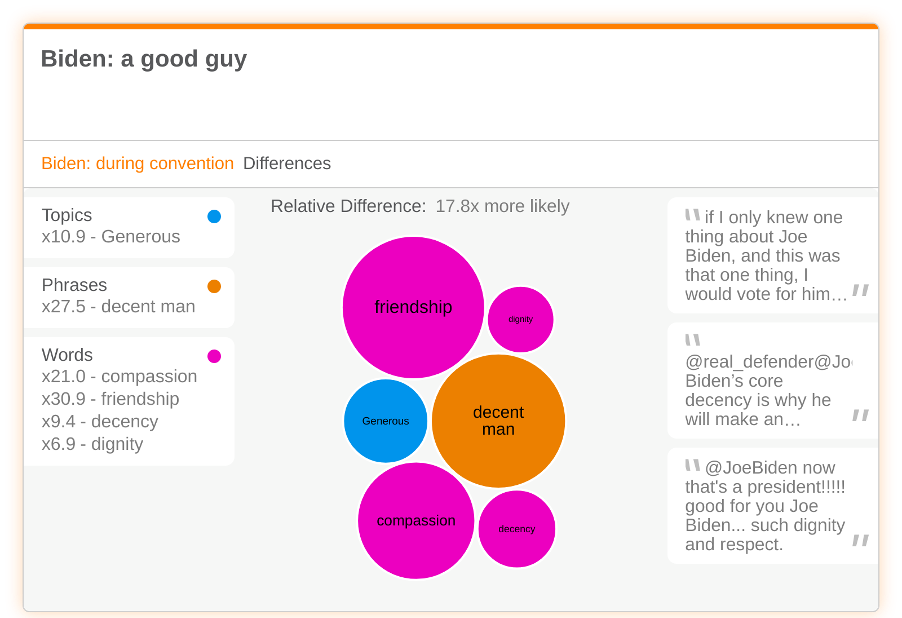
Trump, on the other hand, drove the message that he is the law and order candidate and a defender of the police. But leaning into this message seems to have invited scrutiny of his own record, with many references to his own breaking of the law and references to the Hatch Act. The topic of ‘law and order’ was 1.2x more prevalent among tweets about Trump, with the word ‘laws’ being 3.5x more common.
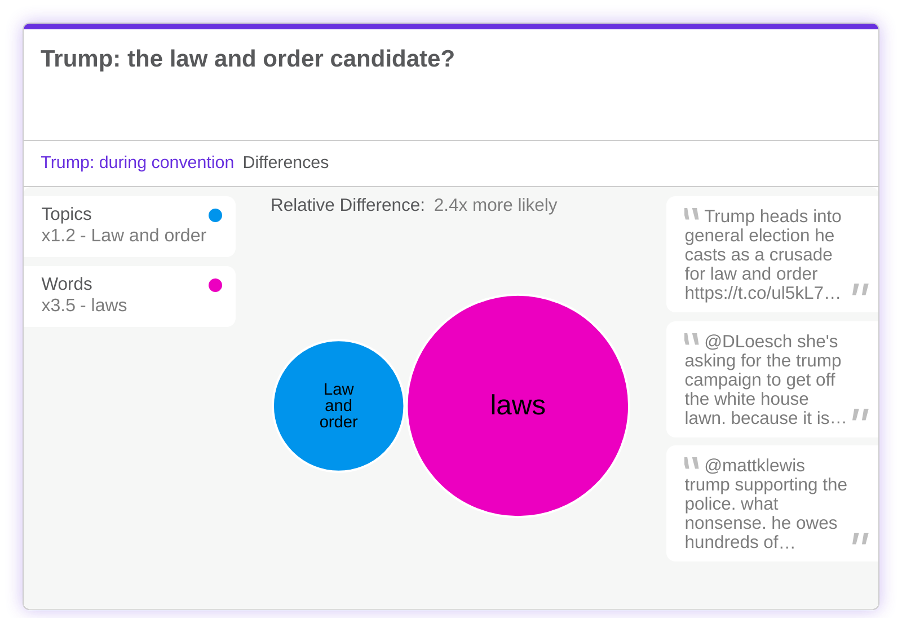
Contrasting approaches to the COVID-19 pandemic
It would be naïve to underestimate the impact of COVID-19 on this election, especially considering President Trump’s persistent downplaying of the risk posed by the virus and the tragic number of deaths that has put the United States in the unenviable position atop the worldwide death count table.
The candidates have put forward markedly different plans for combating the pandemic, and the Twitter data reflects this. The phrases ‘herd immunity’ and ‘vaccine’ were 5.6x more prevalent in tweets mentioning Trump, while ‘mask mandate’ was 35.6x more common in the discussion of Biden.
Interestingly, in both cases, the tweets are largely critical of the respective candidate’s approach.
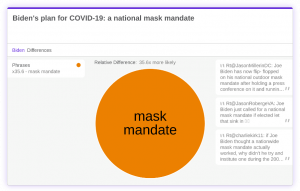
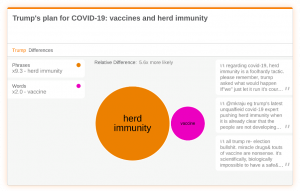
Name-calling: fascists and communists
In an apparent effort to tap into the historic American fear of socialism cultivated during the Cold War, Trump supporters have taken to describing Joe Biden as an agent of the ‘radical left’, even going so far as to promote the ideas he is linked with the Chinese Communist Party. Collectively, these terms were 14x more common in the tweets mentioning Biden.
In fact, during the convention, we discovered significant usage of the phrase ‘empty vessel’ in portraying Biden as a puppet for the more left-leaning wing of the democratic party.
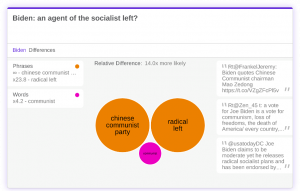
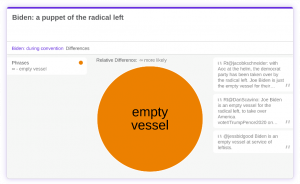
The name-calling continues on the other side of the aisle, with many who oppose Trump using the words ‘fascist’ and ‘dictator’ to describe his presidency. Collectively, these two words are 3x more prevalent in the tweets mentioning Trump than Biden.
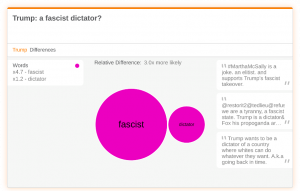
The use of these labels is deeply troubling and indicative of the deep divisions that currently exist among Americans.
This should be concerning for those who (like me) expect their elected officials to cooperate, negotiate and compromise to develop policies that bring the most good to the most people. This kind of name-calling works in opposition to these principles and heightens the risk of further disenfranchisement and loss of faith in government.
Post-convention criticisms
The post-convention period has seen a rise in criticism for both candidates, suggesting that efforts to curate an image of their candidates may not prove to be as enduring as the parties had hoped.
We see this with the appearance of ‘mass murder’ as a phrase to attack Trump for his poor response to COVID-19. His comments encouraging voters in North Carolina to vote in person and by mail have also spurred criticism, with the phrases ‘voter fraud’ and ‘voting twice’ being nearly six times more prevalent in post-convention tweets – nearly all in a negative context.
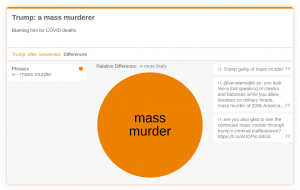
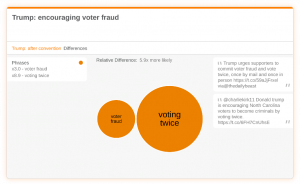
Biden isn’t immune from increased criticism either. The post-convention period saw increased scrutiny of his voting record, a particularly vulnerable area for him given his nearly 50 years of being in elected office. This is evidenced by the six-fold increase in the use of the phrase ‘Biden voted’.
Biden also appears to be taking the blame for the riots and violence that have sprung up in the wake of the killings of George Floyd, Breonna Taylor and others by police. This can be seen with the emergence of the ‘#bidenriots’ hashtag, as well as the increased prevalence of the words ‘rioters’ and ‘violence’.
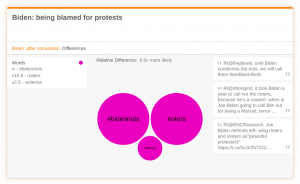
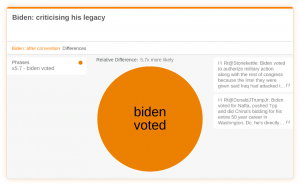
The state of the race
The conclusion that the United States remains heavily divided will surprise nobody. This analysis sheds light on just how politicised the two prevailing social issues of 2020, coronavirus and race relations, have become. It paints a worrying picture for America, and it seems unlikely the tensions will be resolved as a result of the election on November 3.
While some may chalk this up as status quo partisan rhetoric, the use of terms such as ‘mass murderer’, ‘fascist’ and ‘communist’ suggest a dire situation for the future of American politics. Whichever candidate finds himself in the Oval Office come January will have their work set out for them when it comes to unifying the nation and bridging the divide.
Of course, we could explore this further by comparing tweets from this election cycle against previous cycles using Relative Insight, but we’ll leave that for another day…
